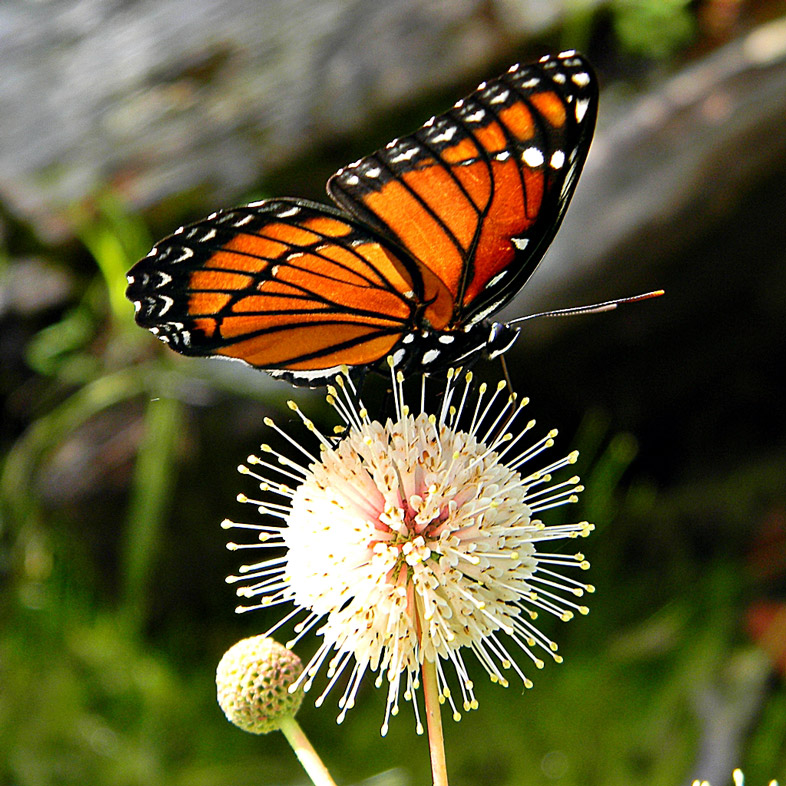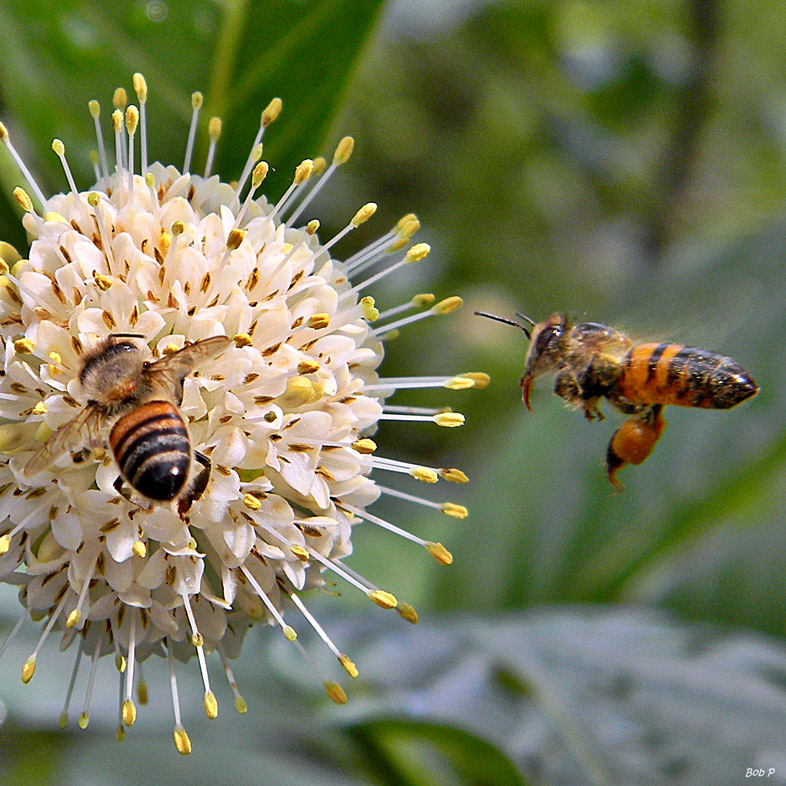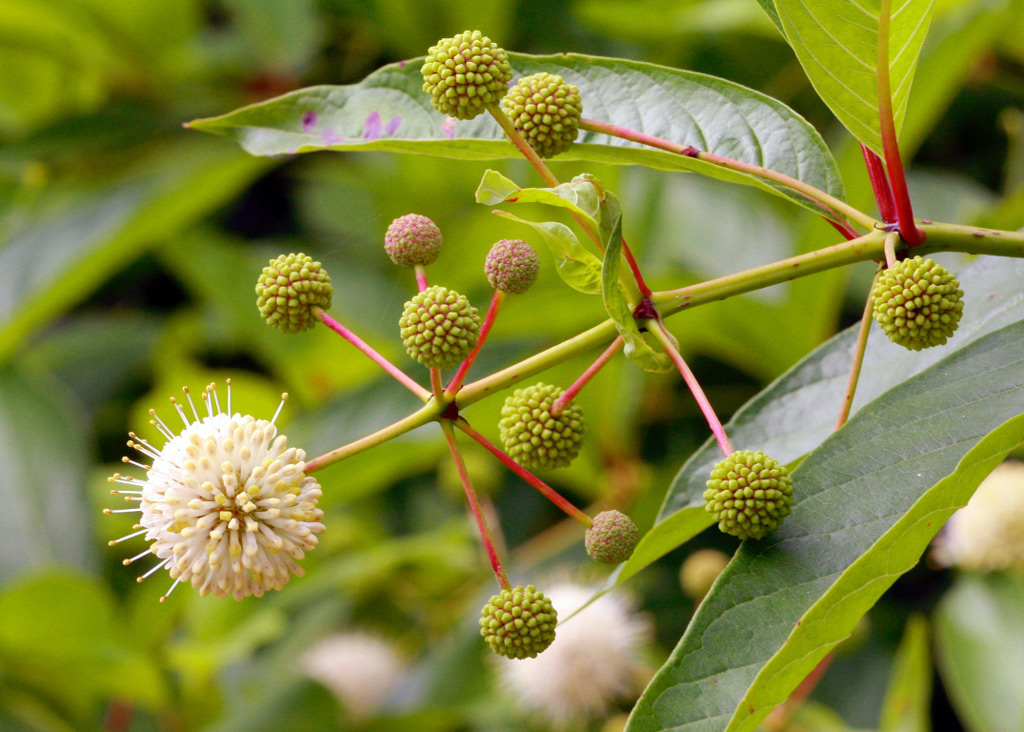Buttonbush
Pictured above: Buttonbush (Cephalanthus occidentalis) by Mary Keim. Click on terms for botanical definitions. View post as a PDF.
Buttonbush is a large, long-lived shrub that occurs naturally in wetlands and along stream and river edges. Its striking, summer-blooming flowers attract a variety of insects, including bees, butterflies and the occasional hummingbird. Its seeds are eaten by ducks and other birds, while its foliage may be browsed by deer. The plant provides shelter and nesting opportunities for a myriad of wildlife, and is a larval host for several moth species.
Buttonbush is known for its distinctive white ball-shaped flowers. Each inflorescence is composed of many small fragrant tubular flowers arranged densely in a 2-inch globular form. The flowers’ protruding pistils give the inflorescence its unique, pincushion-like appearance. The plant’s leaves are dark green, elliptic to ovate, and shiny on top, with pale undersides. They may be up to 7 inches long and arranged in opposite pairs or in whorls. Buttonbush is deciduous, losing its leaves in the winter, with new ones emerging in early spring. Seeds are nutlets and are born in the fall in hard, reddish-brown ball-like achenes.


The genus Cephalanthus is from the Greek words kephale, or “head,” and ánthos, or “flower.” The species epithet occidentalis is Latin for “west” or “western,” suggesting the plant is native to the western hemisphere.
Buttonbush was historically used by Native Americans for medicinal purposes. Its known uses include an antidiarrheal agent, headache and fever remedy, astringent, toothache reliever, and to reduce muscle inflammation.
Family: Rubiaceae (Coffee, bedstraw or madder family)
Native range: Nearly throughout
To see where natural populations of Buttonbush have been vouchered, visit www.florida.plantatlas.usf.edu.
Hardiness: 8A–11
Lifespan: Perennial
Soil: Moist to wet sandy, clay, loamy, mucky or calcareous soils
Exposure: Full sun to shade
Growth habit: 5-20’ tall
Propagation: Seed, cuttings
Garden tips: Because Buttonbush requires wet soil and its roots can withstand full submersion, it makes a great addition to pond and lake edges and wetland depressions. While it can withstand shade, the plant will be leggier with more open foliage than when in full sun. Plants can be pruned in the spring to shape and to encourage denser foliage. Seeds can be gathered in late summer or early fall before the flowerheads dry out and will germinate without any treatment.
Caution: The foliage is toxic to both humans and livestock.
Plants are often available at nurseries that specialize in native plants. Visit PlantRealFlorida.org to find a native nursery on your area.

